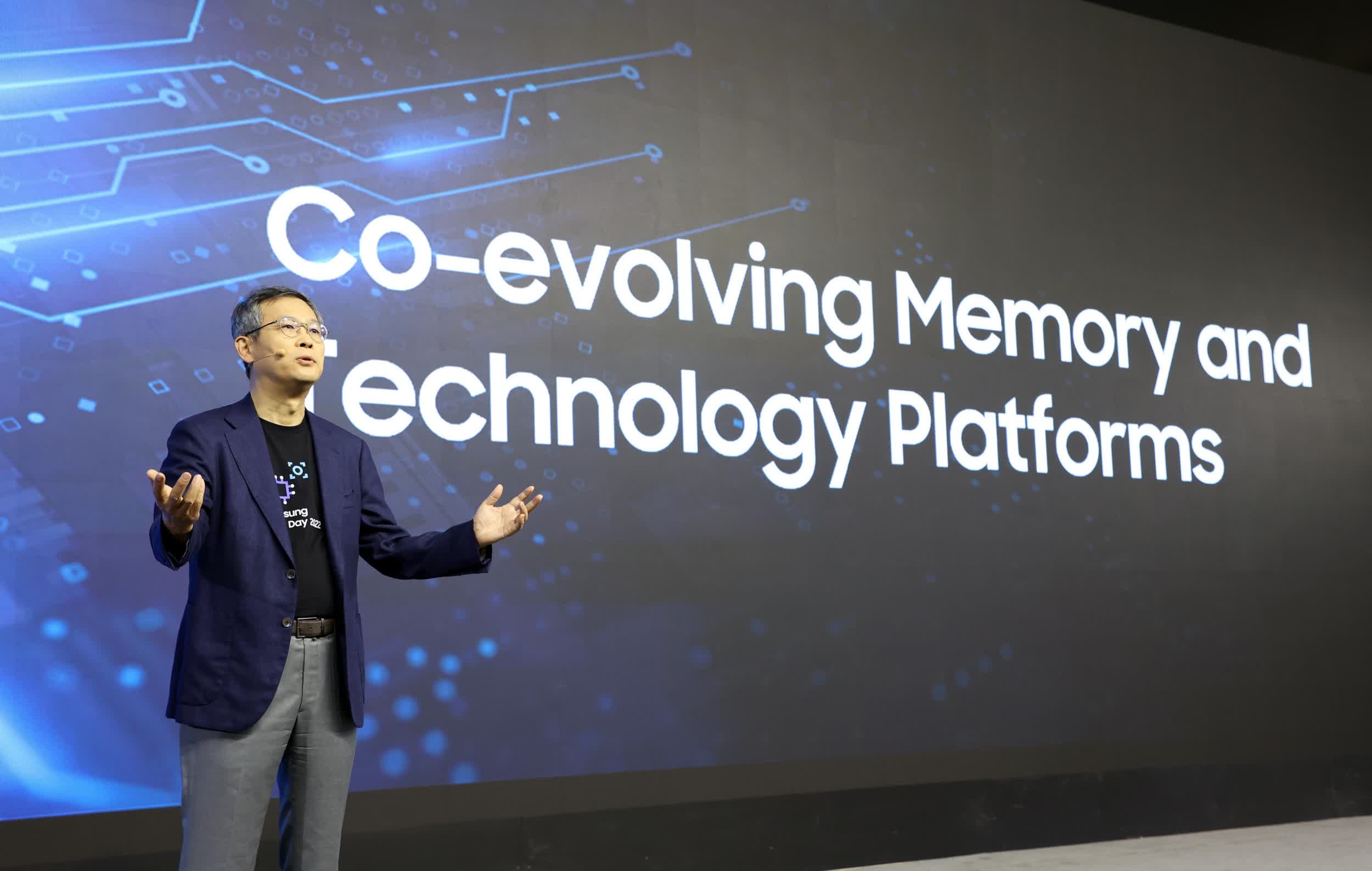What just happened? Samsung at its annual Tech Day conference in San Jose unveiled its fifth-gen 10nm-class (1b) DRAM as well as eighth- and ninth-generation Vertical NAND (V-NAND) tech. The new 1b DRAM is expected to enter mass production in 2023, but Samsung is already hard at work trying to overcome challenges in scaling beyond 10nm.

It believes disruptive solutions in patterning, architecture and materials will be instrumental in shrinking the process even further, with one example of forward-looking tech being High-K material that is already in development.
Samsung has been iterating its V-NAND tech for a decade and has progressed through several generations. The juice is no doubt worth the squeeze as Samsung has realized 10 times the layer count and 15 times the bit growth through eight generations.
The company's 1Tb TLC V-NAND will be available to customers by the end of the year and work is already under way on ninth-gen V-NAND slated for mass production in 2024. By 2030, Samsung expects to be able to stack over 1,000 layers in its V-NAND.

Samsung Tech Day has been held annually since 2017. This year's conference marked the return of in-person attendance following the pandemic. According to Samsung, more than 800 customers and partners attended the one-day event at the Hilton San Jose hotel.
The hardware maker is also accelerating its transition to quad-level cell (QLC) flash while simultaneously enhancing power efficiency. Samsung said this advancement will specifically aid those working with artificial intelligence and big data applications.
Samsung also briefly touched on its GDDR7 DRAM. At 36Gbps, the data rate is double that of GDDR6 and could help to deliver significantly more bandwidth to beefy GPUs set to roll off assembly lines in the not-too-distant future.
Jung-bae Lee, who leads Samsung's memory business, said the company has produced one trillion gigabytes of memory over the last 40+ years. Remarkably, about half of that capacity was manufactured in the last three years alone, highlighting the unprecedented demand as our digital evolution continues.
https://www.techspot.com/news/96242-samsung-shares-1000-layer-v-nand-gddr7-plans.html